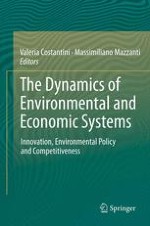
2013 | OriginalPaper | Buchkapitel
1. The GTAP-E: Model Description and Improvements
verfasst von : Alessandro Antimiani, Valeria Costantini, Chiara Martini, Alessandro Palma, Maria Cristina Tommasino
Erschienen in: The Dynamics of Environmental and Economic Systems
Verlag: Springer Netherlands
Aktivieren Sie unsere intelligente Suche, um passende Fachinhalte oder Patente zu finden.
Wählen Sie Textabschnitte aus um mit Künstlicher Intelligenz passenden Patente zu finden. powered by
Markieren Sie Textabschnitte, um KI-gestützt weitere passende Inhalte zu finden. powered by